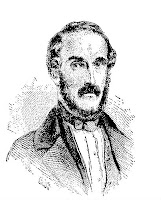Lilo Linke
visited Mérida in 1947 and described her adventures in her book Magic
Yucatan. Lilo made the trip on the narrow
gauge rail from Mérida to Peto. Lilo
says of her visit to Peto:
The little train rattled along between
henequen plantations and fields of Indian corn. Soon we were covered by the
dust that blew in through the open windows. That jungles could be anywhere near
was difficult to imagine. Wherever we stopped, fruit was offered for sale. In
the afternoon we came to the end of the line, a village called Peto. A single
long street led from the station to the market-square and the church.
We were forced to stay at a hotel. In
fact we had the choice between two, and Señor Mendoza selected the one run by a
toothless Chinese. It was rapidly getting dark—as always in the tropics about six o'clock—but I could make out in
the fading light that the sheets on the tumbledown bed were extremely soiled.
I remembered how once in Turkey in
similar circumstances the hotel-keeper had remarked that only four other people
had so far used them. But the Chinaman raised no objection when I asked him to
change them. Perhaps the lack of teeth made arguing difficult for him. He
whipped off the offending sheets, and to my horror I saw three fat bugs
scuttling for shelter. Unperturbed, he shuffled out of the room, to return with
a single sheet that was as indistinguishable from the first as one Chinaman
from another. With a deadpan face he smoothed it over the mattress.
I rushed off to Señor Mendoza's room. He
looked at me over the rim of his spectacles when I explained my trouble.
"I warned you,” he said. "Now listen: no luxury, all right; no
comfort, all right; but no bugs either. I just can't stand them." He
uttered a gentle sigh and scratched his head. "The other hotel is
worse," he said. "It couldn't be," I replied firmly. "I
told him to give you the best room in the house. You even got a wash-basin, he
told me. Still, I'll buy you a hammock. What else do you need?"
Henequen hammocks are a Yucatan
specialty, one of the few products manufactured locally. We got one for next to
nothing in a shop piled with goods in which another Chinese sat behind a
hurricane lamp. We also bought a straw hat, disinfectant soap, a spoon, and
some toilet paper. The roll had been waiting for a customer a long time.”
This photo from
the 1980s is of our departure from Mérida on the narrow gauge train.
Jane and I made
the very same trip as Lilo Linke, and we, coincidentally, stayed in the very
same hotel as author Lilo Linke…not for everybody!Over the years, whenever we had out of town visitors we always made sure that they got the opportunity to experience the train excursion that was a mirror image of the previous century.
On our first
trip to Peto, the conductor came to Jane and I and said; “I have worked on this
train for over 20 years, and you two are the first foreigners that have ever
ridden it to the end of the line.”
Experience Peto, Yucatan, today and read more of our adventures to the places that tourists miss most in our book
Yucatán’s Magic, Mérida Side Trips; Treasures of Mayab, available in paper
and digital editions worldwide.

.jpg)

